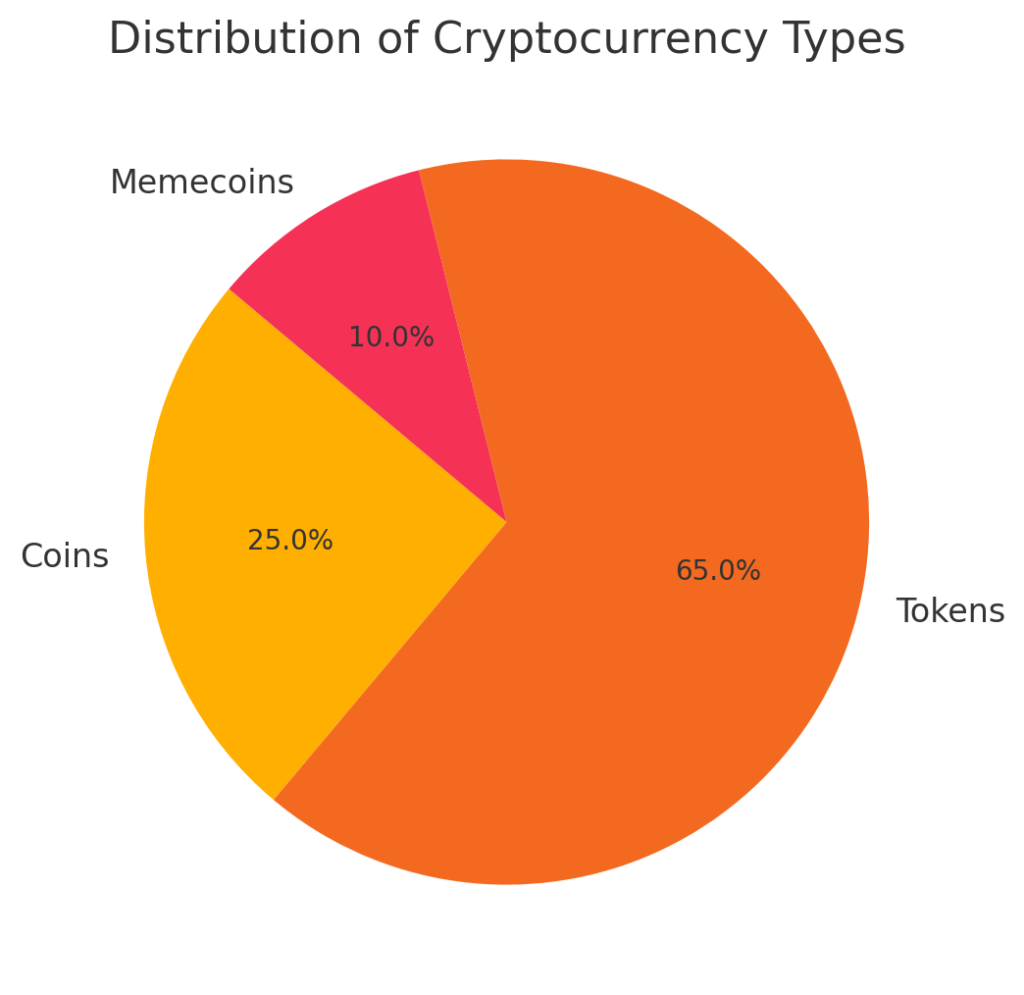
Main Points:
- Cryptocurrencies go far beyond Bitcoin, with over 17,000 in existence and approximately 10,000 actively traded worldwide.
- Issuance models range from fully decentralized (e.g., Bitcoin) to centrally managed tokens by foundations or companies.
- Bitcoin’s value derives from scarcity, transparency, and decentralization, rather than physical backing or state credit.
- Mobile apps have made buying and storing crypto intuitive; managing private keys remains the critical skill.
- Japan’s regulated exchanges now offer bank-level security and compensation systems; most scams exploit weak personal cybersecurity.
① Not Just Bitcoin: A Vast Ecosystem
Contrary to popular belief, “cryptocurrencies” represent tens of thousands of distinct digital assets, not just Bitcoin. As of April 2025, CoinGecko and investing.com report 17,134 cryptocurrencies created, but roughly 10,385 are truly active, meaning they have ongoing trading volumes and community engagement. In Japan alone, over 12 million domestic crypto accounts hold assets exceeding ¥5 trillion (about $34 billion) as of January 2025.
Cryptocurrencies fall into two main categories:
- Coins (e.g., BTC, ETH, SOL) run on their own blockchains and serve as network incentives and fee tokens.
- Tokens (e.g., USDC, LINK, NFT standards) leverage existing blockchains like Ethereum and Solana, often with bespoke economic models called “tokenomics.”
- Memecoins (e.g., DOGE, PEPE) started as jokes but now boast passionate communities and significant market caps.
The pie chart below illustrates the approximate distribution of coins, tokens, and memecoins in today’s market (25% coins; 65% tokens; 10% memecoins).

② Who Mints Crypto? Decentralized vs. Centralized Issuance
Some believe that all cryptocurrencies are arbitrarily issued by unknown parties. In reality, there are two distinct issuance models:
Decentralized Minting: Bitcoin’s Open Protocol
Bitcoin’s issuance follows a predefined code: every ~10 minutes, miners validate transactions, add a new block, and receive newly minted BTC as a reward. No central authority can alter this schedule, ensuring fairness, transparency, and censorship resistance.
Centralized and Hybrid Models: Many Altcoins & Tokens
- Ethereum pre-mined a portion of ETH via its 2014 ICO launch, after which issuance shifted to network participants.
- XRP was fully created at inception, with Ripple Labs holding nearly half under lock-up agreements to supply liquidity over time.
- Stablecoins like USDC and USDT are issued by companies that hold reserves to back each token 1:1 with fiat.
Understanding each cryptocurrency’s issuance mechanism is vital for assessing its risk profile and long-term supply dynamics.
③ Real Value: Beyond “Just Data”
Skeptics dismiss Bitcoin as “mere bits.” Yet, its value arises from classic supply-and-demand: a capped supply of 21 million BTC and ever-growing demand for a non-sovereign store of value.
- Scarcity: 21 million cap prevents inflationary dilution.
- Transparency: Public ledger allows anyone to audit balances and transactions.
- Decentralization: Thousands of nodes worldwide run the network; no single point of failure.
Macro factors—persistent fiat inflation, currency devaluation, and geopolitical instability—have driven institutional adoption:
- U.S. regulators approved spot Bitcoin ETFs in 2024, opening crypto to pensions and mutual funds.
- Companies like Tesla and MicroStrategy hold billions in BTC on their balance sheets.
- Municipalities and some nations now consider Bitcoin as reserve assets.
Bitcoin’s programmed “halving” every ~4 years slashes new issuance, further concentrating supply and reinforcing long-term value potential.
④ Easy to Buy, Critical to Secure
Once the domain of tech experts, crypto is now accessible via intuitive mobile apps, often allowing purchases from as little as ¥100 (≈$0.90). Price charts, one-click buy/sell, and portfolio tracking mean you can start small and learn by doing.
However, self-custody requires serious attention to private keys and recovery phrases:
- Never share your seed phrase.
- Store keys offline (on paper or hardware wallets).
- Consider multi-wallet strategies to spread risk.
Beginners can keep funds on reputable exchanges with two-factor authentication and withdrawal whitelists until they build confidence. Gradually migrating to personal wallets deepens one’s understanding and control.
⑤ Safety First: Regulated Exchanges & Cyber Hygiene
Yes, early hacks like the 2018 Coincheck breach taught costly lessons, but Japan’s Financial Services Agency now imposes stringent security audits and reserve requirements.
- Coincheck’s 2018 loss led to full compensation under FSA oversight; the exchange now operates under Monex’s group-level risk management.
- In 2024, DMM Bitcoin covered a ¥49 billion (≈$330 million) hack from its own resources, demonstrating institutional backing.
Most crypto-related “scams” exploit phishing, impersonation, or remote-access malware—risks common to all online services. Improving personal cyber-hygiene (e.g., avoiding suspicious links, verifying URLs, and using hardware wallets) is the most effective shield.
Conclusion: From Hesitation to Empowerment
Cryptocurrencies may seem shrouded in myths, but understanding their mechanics—issuance, value drivers, and security essentials—reveals a maturing asset class with real-world applications. Whether for investment, cross-border payments, or participating in decentralized networks, informed users can harness these innovations safely. Start small, learn continuously, and choose solutions that align with your risk profile. With clarity and caution, the world of crypto becomes not something to fear, but a frontier to explore.

